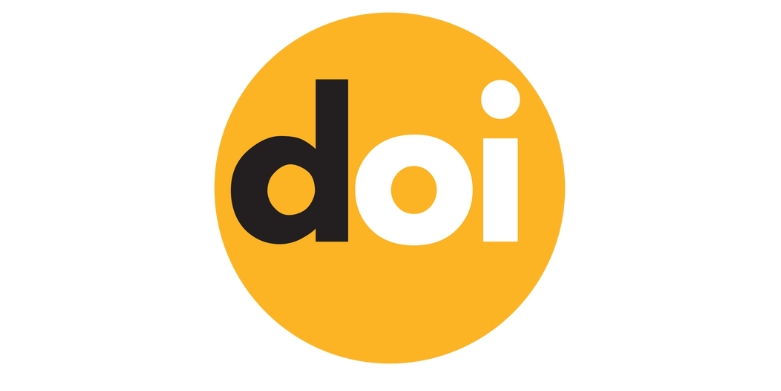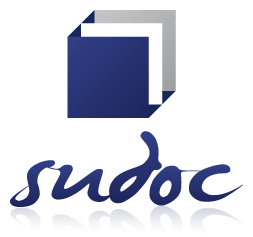Gerobiotics and Telomere Extension: Exploring Telomerase’s Role in Aging Interventions
DOI:
https://doi.org/10.63053/ijhes.151Keywords:
Gerobiotics, Probiotics, Telomeres, Telomerase, AgingAbstract
Telomere attrition, the gradual loss of protective DNA repeats at chromosome ends, is especially significant among the various molecular mechanisms influencing aging. Repeated cellular divisions result in telomere attrition, which pushes cells towards senescence and helps to cause various age-related disorders. The emerging field of gerobiotics—probiotic formulations aiming to change biological aging pathways—has gained more scientific attention in this context. This systematic review evaluates findings from over 30 clinical and preclinical studies addressing the potential effects of gerobiotics on telomere dynamics and promotion of healthy aging.
A notable 24-week randomized controlled trial including type 2 diabetes patients who received a multistrain probiotic supplement shown a statistically significant drop in telomere shortening (p = 0.036). Animal and in vitro research, including those on Lactobacillus fermentum DR9, provide more evidence to support the idea that probiotics might influence telomerase activity by means of anti-inflammatory and antioxidant mechanisms. However, given telomerase’s association with oncogenic processes, the long-term safety of such interventions requires careful assessment.
Though present data is still early, gerobiotics seem to be a good path for age-related health treatments. To find efficacy, evaluate risk, and define clinical relevance, large-scale, longitudinal studies in various populations are absolutely vital. This review emphasizes the need of more rigorous studies to confirm the role of gerobiotics in geroscience and the therapeutic promise of gerobiotics.
References
Tsai, Y. C., Cheng, L. H., Liu, Y. W., Jeng, O. J., & Lee, Y. K. (2021). Gerobiotics: probiotics targeting fundamental aging processes. Bioscience of microbiota, food and health, 40(1), 1–11. https://doi.org/10.12938/bmfh.2020-026
López-Otín, C., Blasco, M. A., Partridge, L., Serrano, M., & Kroemer, G. (2013). The hallmarks of aging. Cell, 153(6), 1194–1217. https://doi.org/10.1016/j.cell.2013.05.039
Blackburn, E. H., Epel, E. S., & Lin, J. (2015). Human telomere biology: A contributory and interactive factor in aging, disease risks, and protection. Science (New York, N.Y.), 350(6265), 1193–1198. https://doi.org/10.1126/science.aab3389
Harley, C. B., Futcher, A. B., & Greider, C. W. (1990). Telomeres shorten during ageing of human fibroblasts. Nature, 345(6274), 458–460. https://doi.org/10.1038/345458a0
Campisi J. (2013). Aging, cellular senescence, and cancer. Annual review of physiology, 75, 685–705. https://doi.org/10.1146/annurev-physiol-030212-183653
Shammas M. A. (2011). Telomeres, lifestyle, cancer, and aging. Current opinion in clinical nutrition and metabolic care, 14(1), 28–34. https://doi.org/10.1097/MCO.0b013e32834121b1
Greider, C. W., & Blackburn, E. H. (1985). Identification of a specific telomere terminal transferase activity in Tetrahymena extracts. Cell, 43(2 Pt 1), 405–413. https://doi.org/10.1016/0092-8674(85)90170-9
Shay, J. W., & Wright, W. E. (2019). Telomeres and telomerase: three decades of progress. Nature reviews. Genetics, 20(5), 299–309. https://doi.org/10.1038/s41576-019-0099-1
Smith-Sonneborn J. (2020). Telomerase Biology Associations Offer Keys to Cancer and Aging Therapeutics. Current aging science, 13(1), 11–21. https://doi.org/10.2174/1874609812666190620124324
Lew, L. C., Hor, Y. Y., Jaafar, M. H., Lau, A. S. Y., Ong, J. S., Chuah, L. O., Yap, K. P., Azzam, G., Azlan, A., & Liong, M. T. (2019). Lactobacilli modulated AMPK activity and prevented telomere shortening in ageing rats. Beneficial microbes, 10(8), 883–892. https://doi.org/10.3920/BM2019.0058
Chaithanya, V., Kumar, J., Vajravelu Leela, K., Baig, H. A., Soliman, M., Alenezy, A., & Shalaby, N. M. (2025). Multistrain Probiotics and Telomere Length in Type 2 Diabetes: A 24-Week Randomized Controlled Trial. Life, 15(2), 311. https://doi.org/10.3390/life15020311
Franceschi, C., & Campisi, J. (2014). Chronic inflammation (inflammaging) and its potential contribution to age-associated diseases. The journals of gerontology. Series A, Biological sciences and medical sciences, 69 Suppl 1, S4–S9. https://doi.org/10.1093/gerona/glu057
Plaza-Diaz, J., Ruiz-Ojeda, F. J., Gil-Campos, M., & Gil, A. (2019). Mechanisms of Action of Probiotics. Advances in nutrition (Bethesda, Md.), 10(suppl_1), S49–S66. https://doi.org/10.1093/advances/nmy063
von Zglinicki T. (2002). Oxidative stress shortens telomeres. Trends in biochemical sciences, 27(7), 339–344. https://doi.org/10.1016/s0968-0004(02)02110-2
Nakagawa, H., & Miyazaki, T. (2017). Beneficial effects of antioxidative lactic acid bacteria. AIMS microbiology, 3(1), 1–7. https://doi.org/10.3934/microbiol.2017.1.1
O'Toole, P. W., & Jeffery, I. B. (2015). Gut microbiota and aging. Science (New York, N.Y.), 350(6265), 1214–1215. https://doi.org/10.1126/science.aac8469
Tsoukalas, D., Fragkiadaki, P., Docea, A. O., Alegakis, A. K., Sarandi, E., Thanasoula, M., Spandidos, D. A., Tsatsakis, A., Razgonova, M. P., & Calina, D. (2019). Discovery of potent telomerase activators: Unfolding new therapeutic and anti-aging perspectives. Molecular medicine reports, 20(4), 3701–3708. https://doi.org/10.3892/mmr.2019.10614
Canudas, S., Becerra-Tomás, N., Hernández-Alonso, P., Galié, S., Leung, C., Crous-Bou, M., De Vivo, I., Gao, Y., Gu, Y., Meinilä, J., Milte, C., García-Calzón, S., Marti, A., Boccardi, V., Ventura-Marra, M., & Salas-Salvadó, J. (2020). Mediterranean Diet and Telomere Length: A Systematic Review and Meta-Analysis. Advances in nutrition (Bethesda, Md.), 11(6), 1544–1554. https://doi.org/10.1093/advances/nmaa079
Werner, C., Fürster, T., Widmann, T., Pöss, J., Roggia, C., Hanhoun, M., Scharhag, J., Büchner, N., Meyer, T., Kindermann, W., Haendeler, J., Böhm, M., & Laufs, U. (2009). Physical exercise prevents cellular senescence in circulating leukocytes and in the vessel wall. Circulation, 120(24), 2438–2447. https://doi.org/10.1161/CIRCULATIONAHA.109.861005
Epel, E. S., Blackburn, E. H., Lin, J., Dhabhar, F. S., Adler, N. E., Morrow, J. D., & Cawthon, R. M. (2004). Accelerated telomere shortening in response to life stress. Proceedings of the National Academy of Sciences of the United States of America, 101(49), 17312–17315. https://doi.org/10.1073/pnas.0407162101
Guo, J., Huang, X., Dou, L., Yan, M., Shen, T., Tang, W., & Li, J. (2022). Aging and aging-related diseases: from molecular mechanisms to interventions and treatments. Signal transduction and targeted therapy, 7(1), 391. https://doi.org/10.1038/s41392-022-01251-0
Shay, J. W., & Wright, W. E. (2002). Telomerase: a target for cancer therapeutics. Cancer cell, 2(4), 257–265. https://doi.org/10.1016/s1535-6108(02)00159-9
Wirth, M., Schwarz, C., Benson, G., Horn, N., Buchert, R., Lange, C., Köbe, T., Hetzer, S., Maglione, M., Michael, E., Märschenz, S., Mai, K., Kopp, U., Schmitz, D., Grittner, U., Sigrist, S. J., Stekovic, S., Madeo, F., & Flöel, A. (2019). Effects of spermidine supplementation on cognition and biomarkers in older adults with subjective cognitive decline (SmartAge)-study protocol for a randomized controlled trial. Alzheimer's research & therapy, 11(1), 36. https://doi.org/10.1186/s13195-019-0484-1
Singaravelu G, Harley CB, Raffaele JM, Sudhakaran P, Suram A. Double-Blind, Placebo-Controlled, Randomized Clinical Trial Demonstrates Telomerase Activator TA-65 Decreases Immunosenescent CD8 + CD28 - T Cells in Humans. OBM Geriatrics 2021; 5(2): 168. https://doi.org/10.21926/obm.geriatr.2102168
Downloads
Published
How to Cite
Issue
Section
License
Copyright (c) 2025 Authors

This work is licensed under a Creative Commons Attribution 4.0 International License.
The journal is licensed under a Attribution 4.0 International (CC BY 4.0).
You are free to:
- Share — copy and redistribute the material in any medium or format for any purpose, even commercially.
- Adapt — remix, transform, and build upon the material for any purpose, even commercially.
- The licensor cannot revoke these freedoms as long as you follow the license terms.
Under the following terms:
- Attribution - You must give appropriate credit , provide a link to the license, and indicate if changes were made . You may do so in any reasonable manner, but not in any way that suggests the licensor endorses you or your use.
- No additional restrictions - You may not apply legal terms or technological measures that legally restrict others from doing anything the license permits.












